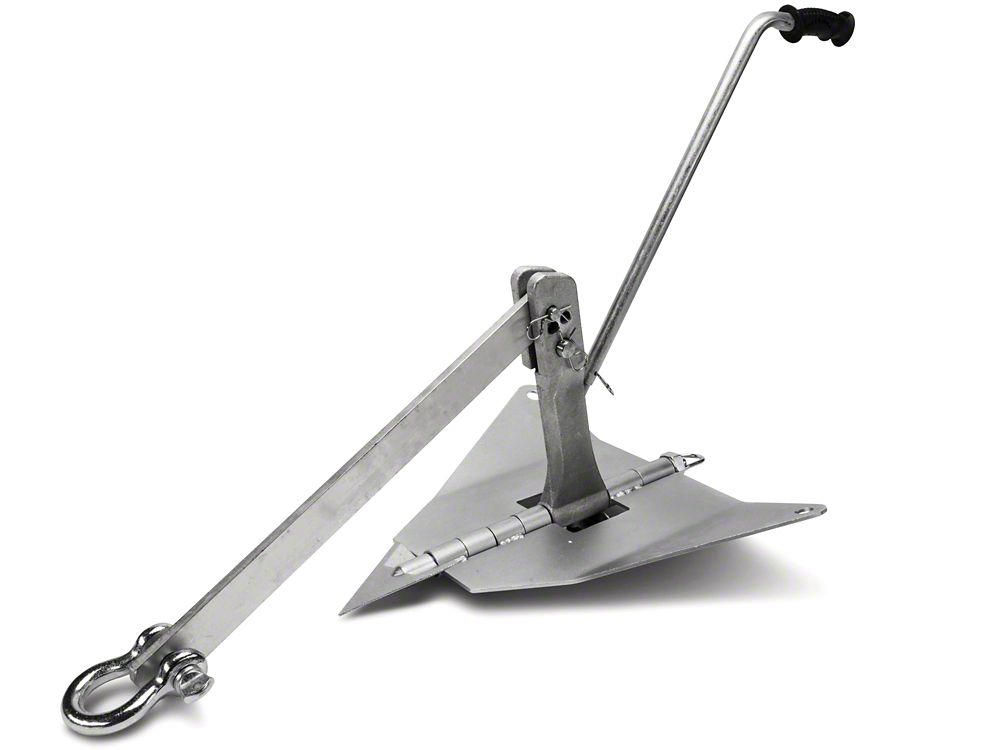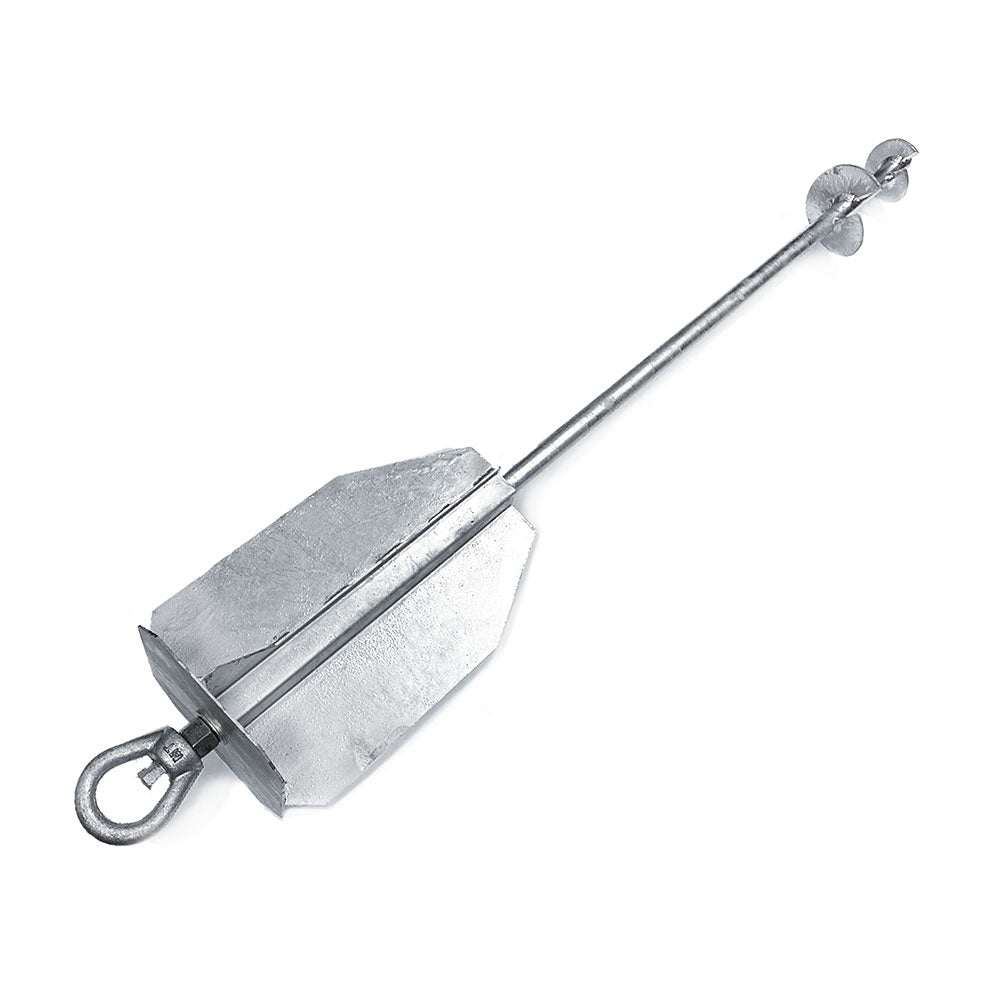Selecting the Best Ground Anchor for Industrial Use
Selecting the Best Ground Anchor for Industrial Use
Blog Article
Check Out the Different Kinds of Ground Support for Your Following Project
When getting started on a construction or landscape design task, understanding the different types of ground anchors offered is critical to ensuring both security and toughness (Ground Anchor). From auger anchors, which excel in varied dirt problems, to stake anchors developed for momentary setups, the alternatives are many. In addition, concrete and screw anchors existing one-of-a-kind advantages in certain circumstances, while deadman supports are tailored for applications needing resistance to lateral forces. The selection of a suitable anchor type can substantially influence the overall success of your task, triggering further exploration right into their respective advantages and applications.

Auger Anchors
Auger anchors are a prominent option in various building and construction and landscape design jobs as a result of their special style and efficient securing abilities. These anchors contain a helical screw-like shaft that is driven right into the ground, permitting a steady and safe hold. The spiral design facilitates easy setup and maximizes resistance against side forces, making auger supports especially efficient in applications such as fencing, momentary frameworks, and disintegration control.
The installment procedure of auger supports is reasonably straightforward. They can be manually or mechanically mounted, relying on the size and needed deepness. This versatility permits for their usage in diverse soil conditions, from sandy to clayey surfaces. Auger supports can be conveniently removed and reused, which includes to their cost-effectiveness and sustainability.
One of the significant benefits of auger anchors is their capacity to disperse loads equally throughout the bordering soil, reducing the danger of soil disruption and decreasing environmental effect. Furthermore, they are less prone to loosening up or heaving gradually contrasted to traditional securing approaches. As a result, auger anchors are a superb choice for tasks calling for reputable and long lasting anchoring options.

Stake Anchors
When it comes to safeguarding structures in a selection of exterior applications, risk supports supply a straightforward and dependable option. These supports are usually built from resilient materials such as steel or light weight aluminum, made to hold up against environmental stresses while providing optimum stability. Their basic layout enables fast setup, making them an optimal option for momentary or irreversible anchoring requirements.
Stake supports are especially valuable in protecting outdoors tents, covers, and various other light-weight frameworks against wind and climate. They operate by being driven into the ground at an angle, creating a strong hold that stands up to pull-out forces - Ground Anchor. The efficiency of stake anchors relies on numerous aspects, consisting of soil kind, dampness web content, and the angle of setup
For included security, numerous risk supports include attachment points for straps or ropes, enabling for stress adjustments as necessary. In applications such as landscape design or construction, they can successfully stabilize equipment or structures on unequal surface. In general, stake supports provide a functional and economical option for protecting different exterior setups, making them a recommended option for professionals and do it yourself fanatics alike.
Concrete Anchors
Concrete anchors supply a durable service for securing structures to concrete surfaces, making certain stability and security in different applications. These anchors are essential for jobs ranging from domestic building and constructions to massive industrial installations. They can be found in various types, consisting of expansion supports, adhesive anchors, and undercut anchors, each created for specific lots requirements and environmental conditions.
Development supports rely upon mechanical mechanisms to grip the concrete when set up. They are optimal for medium to sturdy applications. Adhesive anchors make use of high-strength epoxy or resin to bond the support to the concrete, using superior load-bearing abilities, especially in split concrete circumstances. Undercut anchors produce a special form within the concrete, providing phenomenal holding power, particularly in applications where tensile tons are prevalent.
Selecting the appropriate concrete support involves thinking about variables such as the weight of the tons, the problem of the concrete, and environmental conditions. Appropriate setup techniques are important to make certain optimal performance and reliability. When implemented appropriately, concrete supports considerably boost the structural stability of various tasks, making them essential in modern building techniques. Recognizing the certain demands of your project will certainly aid in picking the best kind of concrete anchor for the task.
Screw Anchors

Screw anchors are a versatile securing solution that can be efficiently employed in a variety of applications where conventional concrete supports might not be sufficient. These supports include a helical style that permits them to be easily driven right into the ground, making them perfect for usage in dirt and various other substrates. Their one-of-a-kind structure gives exceptional holding power and resistance to pull-out useful content forces, making them ideal for numerous tasks, from landscape design to structural assistance.
Among the key benefits of screw supports is their convenience of setup. They call for very little equipment and can commonly be installed without the requirement for excavation, which saves both time and labor costs. Furthermore, screw anchors can be eliminated and recycled, providing a lasting option for momentary applications.
Screw supports are especially beneficial in locations where dirt problems are challenging, such as loosened or sandy soils. Their capacity to be installed at differing depths enables modification based on certain job needs. On the whole, screw anchors supply a reliable and trusted anchoring method, making them an outstanding choice for designers and professionals seeking efficient solutions for their jobs.
Deadman Anchors
Deadman supports function as a durable remedy for maintaining structures in challenging conditions, specifically where conventional securing approaches might fall short. These anchors consist of large, hefty objects hidden underground, which produce resistance against lateral pressures. The layout commonly involves a horizontal component, such as a block of concrete or a steel plate, buried in the dirt, to which wires or bands are affixed.
The efficiency of deadman anchors hinges on their ability to distribute lots over a bigger area, lowering the danger of failure in unstable soil problems. They are particularly helpful in applications such as keeping wall surfaces, short-term frameworks, and slope stablizing, where dirt movement can endanger the integrity of the framework.
Installation of deadman supports calls for mindful planning to guarantee they are placed at the correct deepness and orientation, optimizing their load-bearing ability. While they may call for more labor and product than light-weight supports, their reliability in adverse conditions makes them vital for long-term jobs. Deadman anchors are flexible and can be adjusted to different applications, making them a go-to choice for engineers dealing with special difficulties in their tasks.
Conclusion
Auger anchors succeed in varied soil conditions, while stake supports suit short-lived applications. For concrete more info here surface areas, development and adhesive anchors give reliable options, and screw anchors offer convenience in challenging terrains.
Additionally, concrete and screw anchors present one-of-a-kind benefits in details situations, while deadman supports are customized for applications calling for resistance to side forces - Ground Anchor.Auger supports are a preferred selection in numerous building and construction and landscape design tasks due to their special layout and reliable securing abilities. They come in various kinds, check this consisting of growth supports, glue anchors, and undercut anchors, each developed for details lots demands and ecological conditions
Adhesive supports use high-strength epoxy or resin to bond the anchor to the concrete, offering premium load-bearing abilities, especially in broken concrete scenarios. On the whole, screw anchors give a trusted and reliable securing technique, making them an excellent selection for designers and contractors seeking effective remedies for their jobs.
Report this page